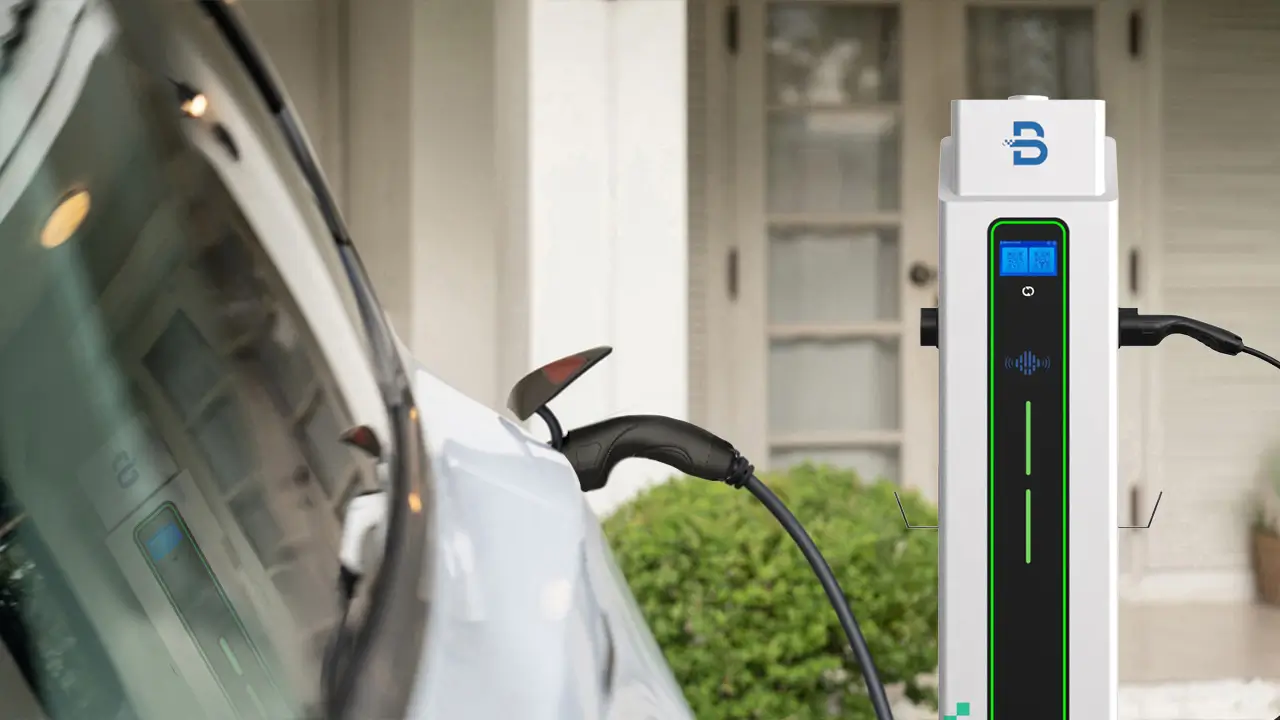Portable EV Charger >
Portable EV Charger >















This EVB floor-standing EV charger is designed for convenience and efficiency. The optional T2S socket offers compatibility with serious EV models, a 5.0-inch touch screen, and a smart app that makes a perfect charging experience for users.
The data can be seen more directly and clear.
Monitor the voltage and current more precisely.
Utilize backup power to unlock the charging cable.
When sensing a person, the LCD screen lights up.
Integrated TYPE A+DC6mA leakage sensor.
Keep track of the operating temperature.
This solar-compatible EV charger harnesses the power of the sun to supplement its energy requirements, reducing reliance on conventional grid electricity. Beyond environmental considerations, during peak sunlight hours, the AC charger for EVs can operate autonomously on solar power, providing an uninterrupted charging service. This not only enhances the station’s reliability but also contributes to grid stability by reducing peak demand.


To safely balance the energy usage between this floor-standing EV charger and other commercial electrical equipment to make your car chargers the most efficient. The overall DLB solution for small parking lots is implemented by the monitoring device BCP-MH-01, It can simultaneously monitor multiple EV chargers and intelligently distribute current based on the usage of each EV charger. Therefore, it safely prevents overload.
Our smart APP EV-SAAS helps to manage the operation of this AC charger for EVs. EV-SAAS supports user authentication, and payment processing, and monitors operations and frequency of activities 24/7, ensures seamless integration with multiple charging stations.

From consultation to installation, our expert team ensures a comprehensive EV charging solution tailored to your needs.
Copyright © 2025, EVB. All rights reserved. Powered by beny.